From the Bigsby to the Strat's synchronized tremolo to the Floyd Rose double–locking system, the holy grail of tremolo systems has remained an aspirational achievement for guitar builders and players alike.
While those three dominated the market — alongside other systems that stood the test of time, like Fender's floating tremolo systems on Jazzmasters and Jaguars — plenty of others have been damned to virtual oblivion.
Some were outstanding, some were quite the opposite, but they all met a similar fate by the hands of public disinterest, impractical engineering, and overall scant use.
In step with the massive amount of guitar manufacturing experimentation between the 1960s and '80s, there was also a worldwide quest to perfect the trem during the same period.
Out of all of the picks available, these are the finest... Or, at least, the most notable tremolos ever affixed to guitars.
Hopf Tremolos
One of the earliest examples of a tremolo system is commonly referred to as a Hopf tremolo. The simple reason is that this design was often found on German–made Hopf guitars. The Hopf trem was actually manufactured by AB Müller (ABM), also a German manufacturer and supplier known for precision engineering.

1968 Hopf 09 808 Studio
Besides supplying tremolos for Hopf, ABM supplied the tremolos and hardware used by a number of German guitar companies at the time, including Hofner and Framus.
The Hopf trem is known for unparalleled tuning stability and a Bigsby–like response thanks to its spring–based design. Unlike the Bigsby, though, the Hopf features no down–tension bar.
It also stands out from most other trems in that the top and bottom halves of the trem are held together entirely by string tension, meaning that it literally falls apart if you take the strings off. Don’t let that scare you, though, because it’s extremely easy to setup and re–string.
The most famous Hopf tremolo was used by Allen Collins of Lynyrd Skynyrd on his Gibson Firebird. His system featured a Strat–style trem arm that was not standard for most Hopfs. Hopf guitars largely shipped stock with Maestro–style vibrola arms, which are more common on the used market.
If you want Hopf with a Fender–style arm like Collins had, it is possible to mix and match arms, as they screw right on. While this trem wasn’t designed for huge dive bombs, it is one of the smoothest tremolos functionally and a sweet sonic sister to the Bigsby.
Hofner V2 and V3 Tremolo
As stated earlier, German manufacturer AB Müller had a hand in the production of a number of guitars' hardware, including fellow German company Hofner. Like Hopf, Hofner has quite a few rare tremolo designs on their models that are worth discussing on their own.
While there are variations of Hofner trems, a couple designs in particular stand out not just in terms of design, but in terms of functionality as well.
Specifically, we are talking about the trem system found on Hofner’s early ‘60s V2 and V3 guitars. These models tended to feature a Bigsby–style trem system with two tension springs as opposed to one, often concealed by a so–called ashtray–style bridge cover.
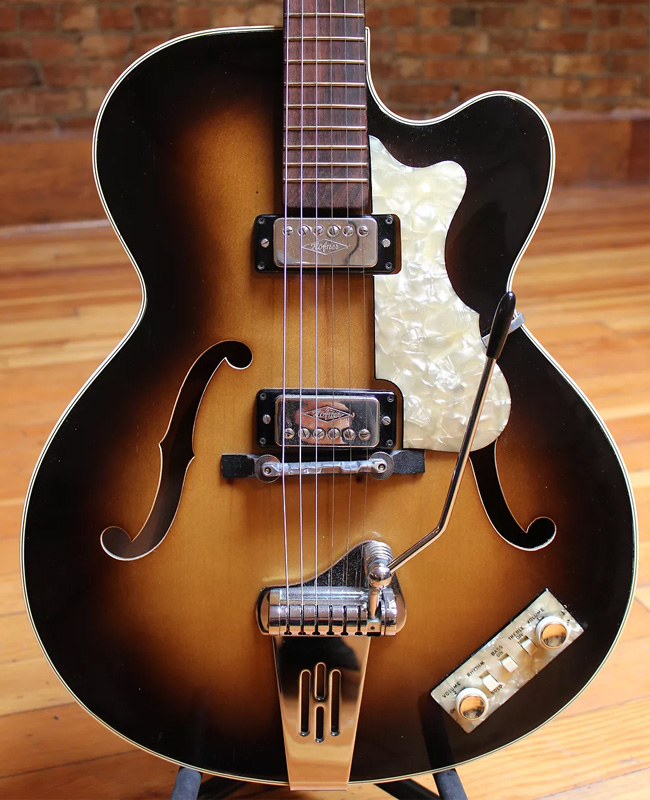
1966 Hofner Model 4500 V2
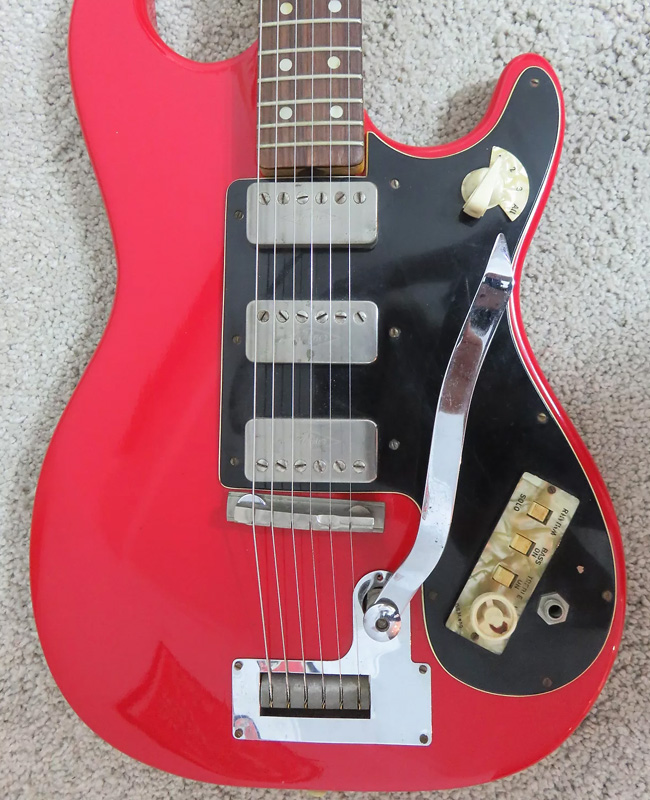
1960 Hofner V3
The tremolos on these guitars came stock with elongated, Fender–style tremolo arms and feel like a cross between a Bigsby and Jazzmaster floating trem. The two–spring system also provides a healthy amount of resistance and stays in tune much better than you'd expect.
They work exceptionally on Spaghetti Western and surf–style guitar lines. If you get can your hands on an old Hofner V2/V3 in good condition, you will not be disappointed.
Wurlitzer Tremolo
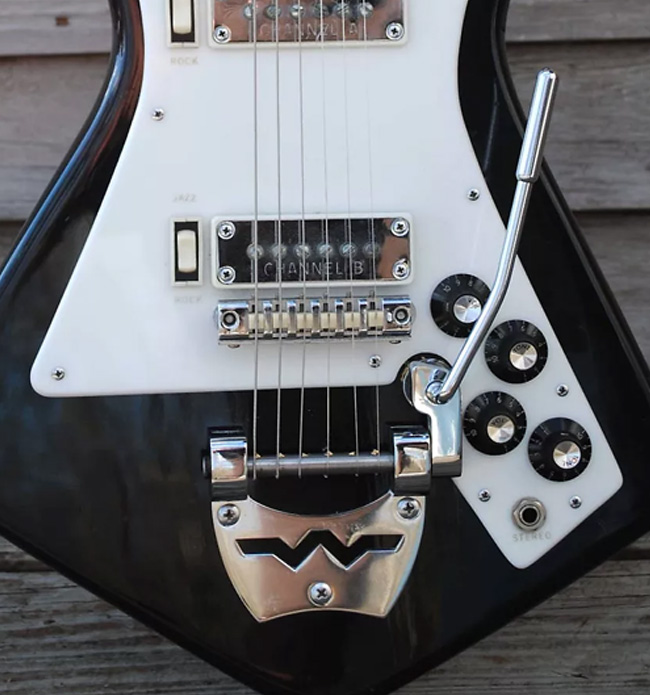
'60s Wurlitzer Gemini
The Wurlitzer tremolo — surprise, surprise — was found on Wurlitzer guitars and was produced by the famous Holman–Woodell factory in Kansas. These trems were also found on other small local brands and one–offs from the factory in the ‘60s and ‘70s.
In terms of design, they are a lot like a Bigsby with a few differences. Mainly, there’s no down–tension bar, and you string the guitar via an open slotted, wraparound mechanism.
It can be slightly annoying to string for those who are new to it. However, it’s fairly easily to get used to and the trem tends to keep the guitar in great tune.
They are typically well–balanced and will feel right at home for Bigsby lovers, even with the thinner non–Maestro bar.
Rockinger Tremolo
In our Kramer Buyer’s Guide, I briefly discussed the Rockinger tremolo. Designed and manufactured in Germany, Rockinger was the premier locking nut tremolo for a short period of time in the early '80s and was the first locking system introduced on Kramer guitars.
While Rockinger’s had a short run at the top, they were ultimately supplanted in the era by Floyd Rose and Kahler tremolo systems.
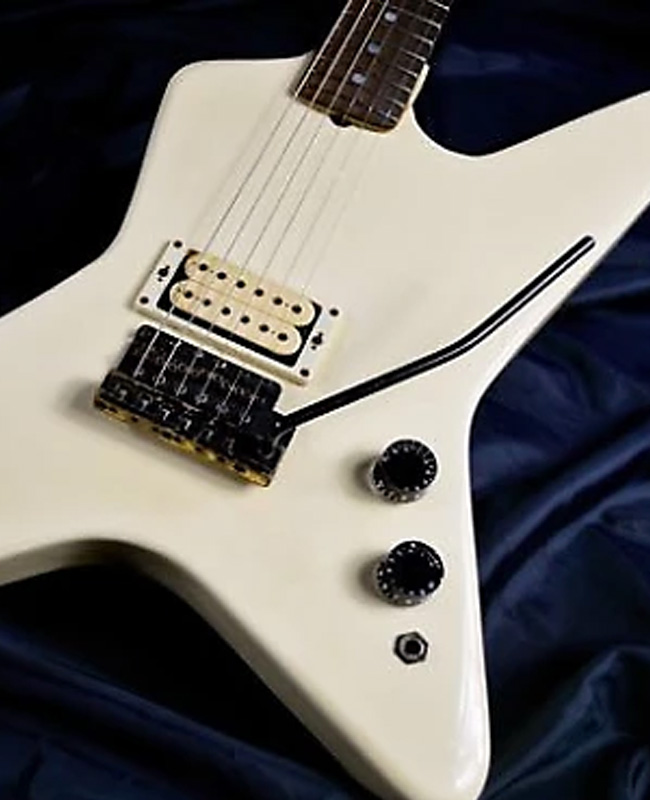
1982 Kramer USA Voyager Imperial
Initially dubbed the “Eddie Van Halen tremolo,” the Rockinger was known largely for fostering much of the same type of sonic madness as a Floyd.
While it didn’t have a whole lot of give when pulling up, the Rockinger had a number of distinct advantages over the Floyd Rose. For one, you didn’t have to clip the ball ends of the strings to your guitars like you did with a Floyd Rose.
Another distinct advantage it has over the Floyd is the location of the fine–tuners. The Floyd has fine tuners on the top of the bridge, while the Rockinger has them on the back, making for a more comfortable playing experience with less mechanical obstruction.
One of the marketed upsides was that that the Rockinger was also a fully compatible replacement for a 6–screw, vintage Strat–style tremolo. Installing a Rockinger required no additional routing/drilling on the body, which is a huge plus.
For players in those days looking to get those Van Halen dive bombs, the Rockinger was the way to go. For as much flack as it got for tuning stability (some of it undeserved), it was a revolutionary bridge design that surprisingly did not keep up with its contemporary competition.
Fender FreeFlyte Tremolo
Last and, well, least is the Fender FreeFlyte tremolo from the Dan Smith era in the early–to–mid ‘80s. Dan Smith’s time running Fender is one of the grossly unrecognized periods in the company’s history, but some attempts at innovation did result in serious flops. The FreeFlyte tremolo was one of those marks missed. To put it lightly, it wasn’t the most practical design ever thought up.
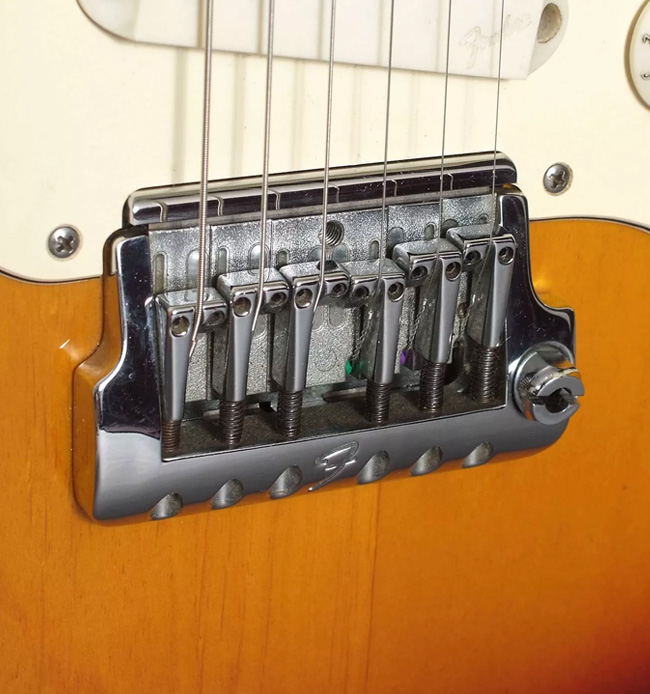
1983 Fender Stratocaster Elite
Let’s start with the positive: it was Fender’s first attempt at the now standard two–point tremolo, which would largely supplant the original six–screw design. It also wasn’t necessarily any worse than the original six–point design in terms of tuning stability, and it did have an improved range for pulling up and diving down. When properly set–up, these tremolos can actually play pretty well.
The ultimate downside of this design was that it nullified some of the high points that made the Stratocaster a classic: its modularity and maintainability.
Unlike the traditional Strat trem that came before it, the FreeFlyre tremolo was top–loaded and the trem claw and springs went under the pickguard and pickups.
Because of this, Strats with the Freeflyte system have bodies routed unlike any others before or after them. If players wanted to change it out, they either had to route the body for a new tremolo system, or just live with the FreeFlyte.
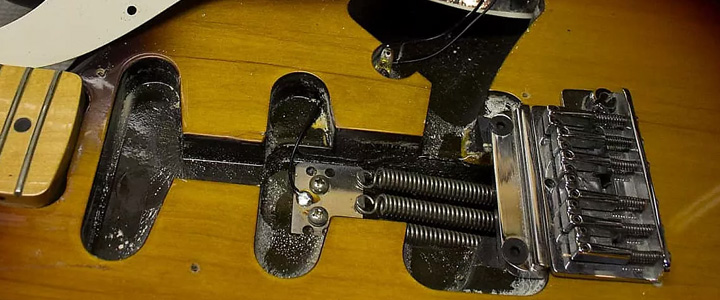
1983 Fender Stratocaster
Today, the FreeFlyte trems have been long discontinued and are pretty rare by themselves. They do come standard on ‘83 and ‘84 two–knob Fender strats and all Elite Strats from the period, so you will assuredly see them around if you are looking for an ‘80s Fender. Buyers beware.
